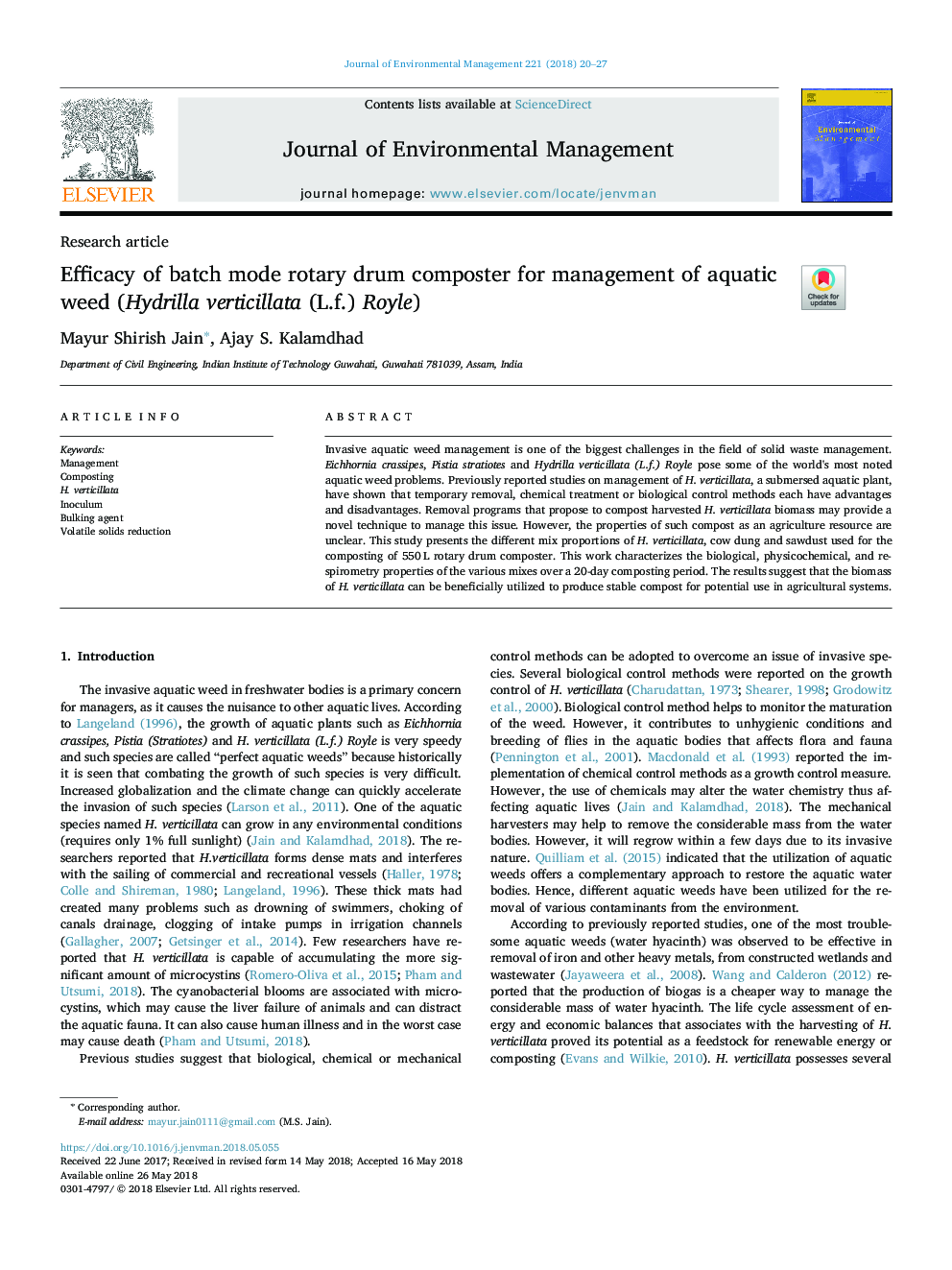| Article ID | Journal | Published Year | Pages | File Type |
|---|---|---|---|---|
| 7476345 | Journal of Environmental Management | 2018 | 8 Pages |
Abstract
Invasive aquatic weed management is one of the biggest challenges in the field of solid waste management. Eichhornia crassipes, Pistia stratiotes and Hydrilla verticillata (L.f.) Royle pose some of the world's most noted aquatic weed problems. Previously reported studies on management of H. verticillata, a submersed aquatic plant, have shown that temporary removal, chemical treatment or biological control methods each have advantages and disadvantages. Removal programs that propose to compost harvested H. verticillata biomass may provide a novel technique to manage this issue. However, the properties of such compost as an agriculture resource are unclear. This study presents the different mix proportions of H. verticillata, cow dung and sawdust used for the composting of 550â¯L rotary drum composter. This work characterizes the biological, physicochemical, and respirometry properties of the various mixes over a 20-day composting period. The results suggest that the biomass of H. verticillata can be beneficially utilized to produce stable compost for potential use in agricultural systems.
Related Topics
Physical Sciences and Engineering
Energy
Renewable Energy, Sustainability and the Environment
Authors
Mayur Shirish Jain, Ajay S. Kalamdhad,
